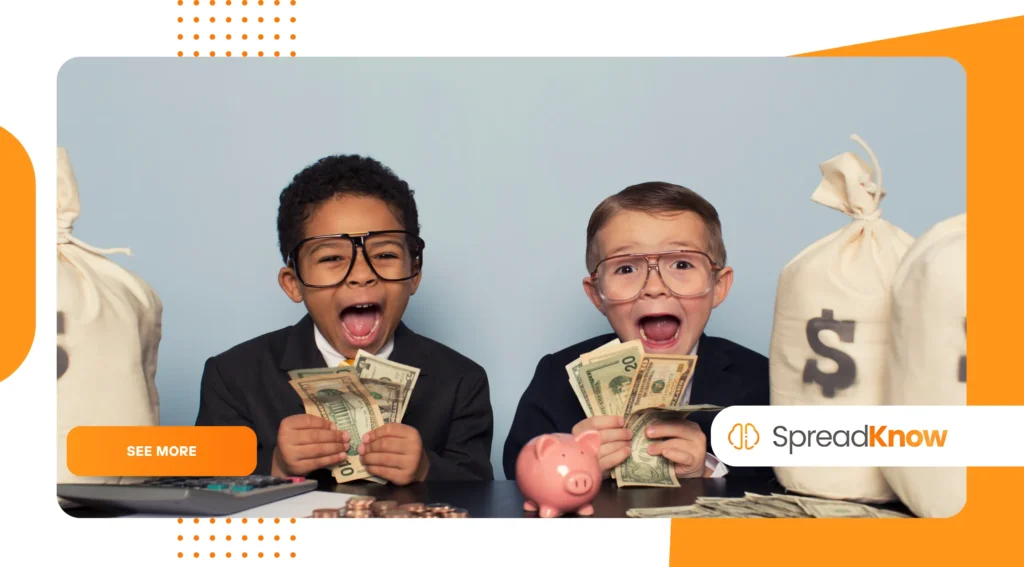How to Teach Kids About Compound Interest Using TikTok Trends

Learning how to teach kids about compound interest is a fundamental step toward securing their financial future.
Anúncios
In today’s fast-paced digital world, traditional teaching methods often fall flat with younger generations.
We must adapt our educational approach to resonate with the platforms and trends they already engage with daily. This is where the creative power of TikTok comes in.
This article explores innovative, engaging, and modern strategies to explain this vital concept.
You will discover practical ways to use viral trends and challenges to make compound interest relatable.
Anúncios
We’ll cover everything from the concept’s core to implementing it through real-world examples and digital challenges.
Summary:
- Why Compound Interest is Crucial for Kids’ Future
- What Exactly is Compound Interest, Explained Simply?
- The TikTok Generation: Bridging Finance and Fun
- How to Use Viral TikTok Trends to Illustrate Growth
- Creating the “Interest Challenge” on TikTok
- Real-World Applications Beyond the Screen
- Frequently Asked Questions (FAQ)
1. Why Compound Interest is Crucial for Kids’ Future
Compound interest is often called the “eighth wonder of the world” for a compelling reason. It is the core mechanism that allows wealth to grow exponentially over time.
Starting early allows even small sums of money to build significantly. You are giving your children the gift of time, the key ingredient for compounding.
This knowledge empowers them to make smarter decisions with future earnings. Understanding this concept early can drastically change their financial trajectory later in life.
2. What Exactly is Compound Interest, Explained Simply?
Many adults struggle to grasp this concept fully; it seems abstract. Simply put, compound interest is the interest you earn not only on your initial principal but also on the accumulated interest from previous periods.
It’s like a financial snowball gaining momentum down a hill. The longer the snowball rolls, the faster it grows and the bigger it gets.
This differs from simple interest, which only accrues on the original amount invested.
+ Spread the Knowledge of DIY Home Automation for Beginners
Table 1: Simple vs. Compound Interest Comparison (Initial Investment: $1,000, Annual Rate: 5%)
| Year | Simple Interest Earned (Cumulative) | Compound Interest Earned (Cumulative) |
| 1 | $50.00 | $50.00 |
| 5 | $250.00 | $276.28 |
| 10 | $500.00 | $628.89 |
| 20 | $1,000.00 | $1,653.30 |
The data clearly demonstrates the increasing gap over time. This table is a powerful visual aid for children.
3. The TikTok Generation: Bridging Finance and Fun
Today’s youth spend countless hours scrolling through short-form video content. This digital environment is their primary source of entertainment and information delivery.
To effectively teach kids about compound interest, we need to meet them where they are. Using TikTok’s dynamic and digestible format captures their attention instantly.
We can translate complex financial ideas into engaging, 60-second educational snippets. Imagine making financial literacy a trending topic—it’s entirely possible.
+ Social Media as the New Newsroom: Why Gen Z Prefers TikTok to Traditional Outlets
4. How to Use Viral TikTok Trends to Illustrate Growth
Current TikTok trends provide excellent templates for financial lessons. Consider the “glow-up” or transformation challenges popular on the platform.
These trends visually show a rapid, positive change over a short period. You can easily adapt this idea to show money “glowing up” over years.
Start with a small amount and illustrate its growth year by year in a fast-paced montage. Another idea is using popular dance or lip-sync trends to represent the compounding formula.
Each beat or move could represent an investment cycle or period.
Visual storytelling is key to maximizing retention. Use bright colors, popular sounds, and clear text overlays.
Keep the language snappy and relatable, avoiding complicated financial jargon. Remember, the goal is curiosity, not a certified financial planner exam.
+ What to Do When You Unexpectedly Lose Income
5. Creating the “Interest Challenge” on TikTok
An engaging way to teach kids about compound interest is by launching an “Interest Challenge.”
The challenge encourages participants to track and share their initial investment (real or hypothetical).
For example, they could start with $10 and track its theoretical weekly growth at a certain percentage. Participants could post weekly updates on the projected growth of their initial sum.
This competitive and shared experience fosters a dynamic learning environment. Use a simple hashtag like #CompoundChallenge or #MoneySnowball.
You are gamifying the concept, making it interactive and memorable.
6. Real-World Applications Beyond the Screen
While TikTok is a fantastic tool, grounding the lesson in reality is essential for true understanding.
Discussing how savings accounts, college funds, or retirement accounts utilize compounding is critical.
Show them how their parents’ or grandparents’ investments have grown over decades. You can use the example of an allowance or birthday money.
Instead of spending it immediately, invest a portion and see how that small amount grows.
You can reference legitimate sources, like this resource on the power of starting early from The Balance for further real-world context.
Encourage them to open a mock stock portfolio or a high-yield savings account (HYSA). An HYSA is a straightforward, low-risk way to show them compounding in action.
Seeing actual interest credited, even small amounts, transforms the theoretical into the tangible. This hands-on experience solidifies the abstract knowledge gained from the digital content.
7. How Can Parents Best Support This Financial Education Journey?

Parents are the primary financial role models and educators in a child’s life. The best support is ongoing, open, and honest dialogue about money.
Share your own financial decisions and mistakes (age-appropriately, of course). Establish a transparent family budget or a chore-for-pay system.
This structure provides a mini-economy within the home. Discussing credit card interest is also vital, demonstrating how compounding can work against them.
This balanced perspective highlights the power and the danger of the concept.
8. What Are the Pitfalls of Teaching Finance Through Social Media?
While social media is a powerful tool, it presents several challenges, primarily misinformation and simplification.
Not every “financial guru” on TikTok provides sound advice. Emphasize critical thinking and the importance of verifying information from trusted sources.
Additionally, the short-form nature of the content can oversimplify complex topics. You must use the TikTok trend as a hook, a starting point for deeper discussion.
The video opens the door; the parent or educator provides the detailed, factual follow-up.
9. Why is Time the Most Valuable Asset in Compounding?
The relationship between time and compounding is not linear; it is exponential. The most significant growth happens in the later years of an investment’s life.
This is why starting to teach kids about compound interest when they are young is so important.
Delaying a ten-year investment start can literally cost hundreds of thousands of dollars over a lifetime. Introduce the “Rule of 72,” a simple way to estimate how long an investment takes to double.
Dividing 72 by the annual interest rate gives the approximate number of years. For instance, an investment earning 8% doubles in about nine years.
10. Practical Steps: Setting Up a “Compounding Jar”
For younger children, a physical “Compounding Jar” is an excellent visual aid. They start with an initial investment of coins or dollars.
Each week, add the interest earned (a calculated amount based on an agreed-upon percentage). They physically see the jar fill up faster over time.
The “interest” money comes from the parent, acting as the bank. This physical, tactile experience is an incredibly effective learning tool.
It makes the abstract concept of financial growth concrete and immediate for them.
Conclusion: Preparing Them for Financial Independence
The ability to teach kids about compound interest using modern, relatable methods like TikTok trends is a game-changer.
You are not just teaching a financial formula; you are instilling a powerful lifelong habit.
By bridging the gap between digital entertainment and essential financial literacy, you empower the next generation.
This foundational knowledge gives them the confidence to navigate complex financial landscapes successfully. Remember, financial education is an ongoing process, not a one-time lecture.
We strongly encourage you to keep the conversation going and explore authoritative resources on building financial literacy for all ages, like the educational content provided by the U.S. Securities and Exchange Commission (SEC).
This continuous learning will ensure their future prosperity.
Frequently Asked Questions (FAQ)
Q: At what age should I start to teach kids about compound interest?
A: You can introduce the basic concept of growth and saving around age five or six. The actual mathematics can be introduced more formally between ages 10 and 12.
Q: Do I need a TikTok account to use these teaching methods?
A: No, you don’t need an account, but you can view the platform’s trending content. The key is adapting the style of the videos—short, visual, and high-energy—to your own teaching.
Q: Are there any good calculator tools to show the results?
A: Yes, many free online compound interest calculators are excellent for demonstrating the long-term impact of time and interest rates in a clear, digital format.
Q: How can I make the lesson relevant if my child doesn’t have a job yet?
A: Use their allowance, gifts of money, or even small chore earnings as the principal. Hypothetical scenarios are also effective tools.
Q: Should I link this lesson to debt and credit cards?
A: Absolutely, showing how compounding works in reverse (debt) is a critical lesson. It emphasizes the importance of paying off high-interest debt quickly.
